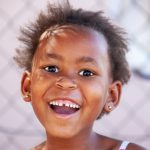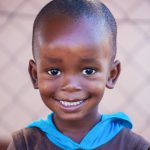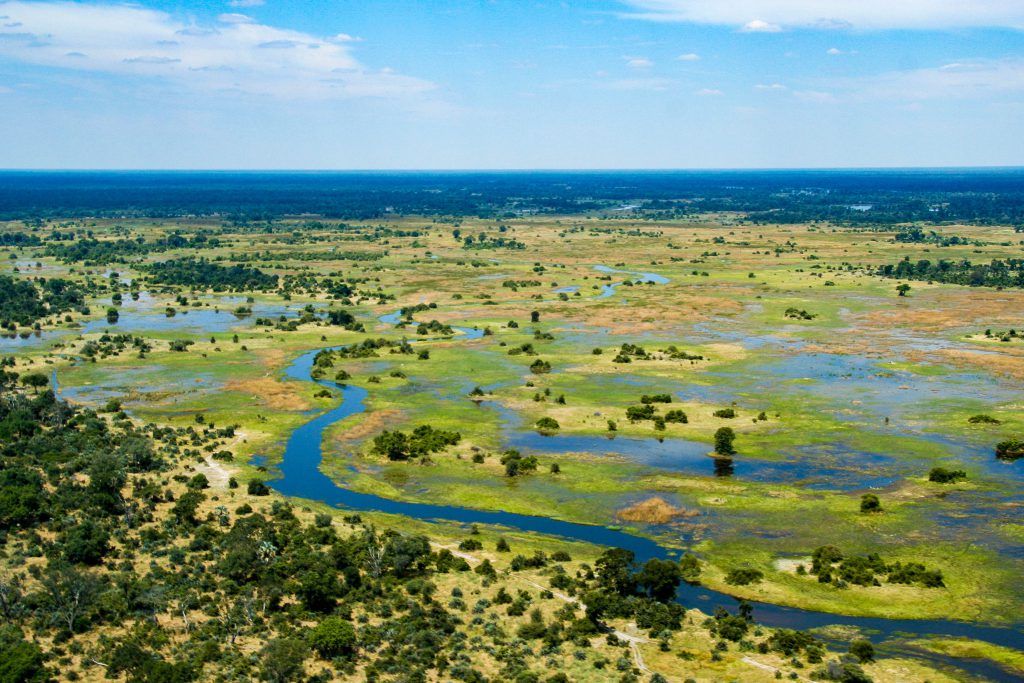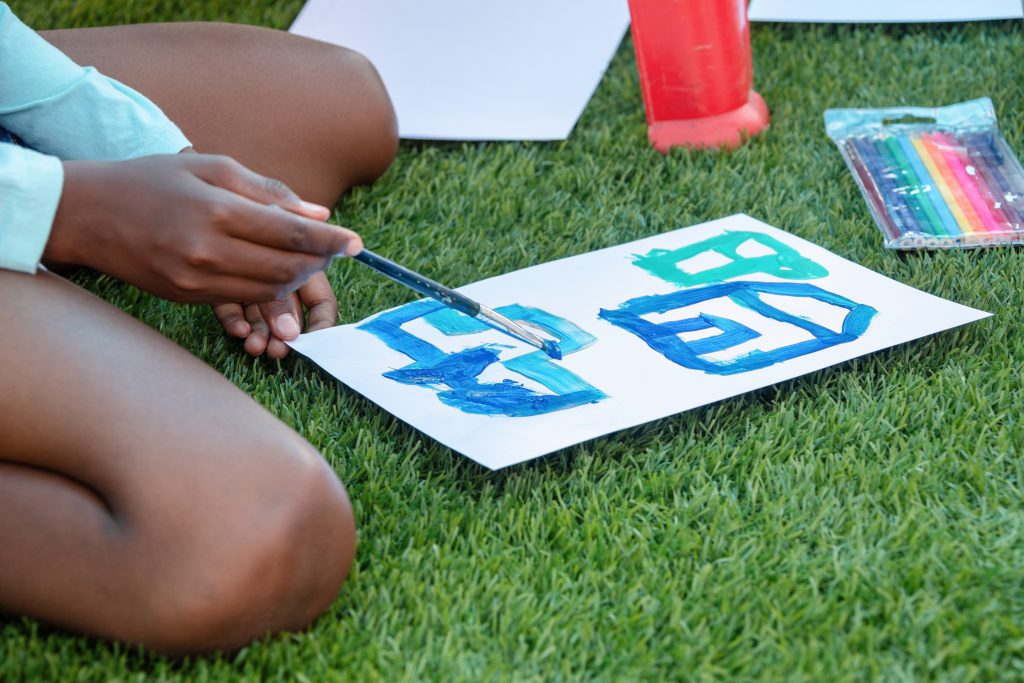Realizing Children’s Rights in Botswana


Botswana is a stable democracy and one of Africa’s richest countries. It has achieved a great deal when it comes to the fight against HIV-AIDS, such as providing universal healthcare, including access to Antiretroviral Treatment. A dark spot on its record is the treatment of its San community, who continue their struggle for survival in a country looked down on and ignored by the dominant ethnic groups.

Children’s Rights Index: 7,21 / 10
Orange level : Noticeable problems
Population: 2,25 million
Pop. ages 0-14: 31.48%
Life expectancy: 63.8 years
Under-5 mortality rate: 36.5 ‰
Botswana at a Glance
Botswana, officially the Republic of Botswana, is a predominantly flat, landlocked Southern African country surrounded by Namibia to the west and to the north, Zimbabwe to the east and South Africa to the south. It even has a short, barely few hundred-meter-long border with Zambia to the north-east. Also, it has a semi-arid subtropical climate.
Archaeological digs have shown that hominids have lived in Botswana for around two million years. Present day Botswana was the site of the Bechuanaland Protectorate of the former United Kingdom of Great Britain and Ireland between 1885 and 1966, when Botswana became an independent country.
The official languages of Botswana are English and Setswana. Tswanas are the dominant ethnic group, while ethnic minorities include the Kalanga and the San peoples. The name “Botswana” means the land of the Tswana in the Setswana language. Batswana is the demonym used to describe citizens of Botswana, and “Botswanan” is considered offensive.

Botswana is also home to the spectacular Okavango Delta, one of the world’s largest inland deltas. The famous African Big Five are still relatively common here thanks to an overall good practice when it comes to the conservation of the environment. In spite of its well-preserved fauna, the country is faced with a few major environmental issues, including widespread desertification.
Botswana is Africa’s oldest democracy, and is considered to be among the most stable and transparent countries in the world. Nevertheless, Botswana still has some work to do when it comes to its treatment of the San people, high unemployment, or the fight against poverty and infectious diseases such as HIV-AIDS.
Addressing the Needs of Children [1]
Right to Health
Children under the age of 15 constitute 30 % of the population of Botswana and the median age of the entire population is 25 years. An average Batswana woman starts having children at the age of 19 and has 2,4 children during her lifetime. Botswana has the 66th highest infant mortality rate in the world, 27 out of every 1000 children not surviving beyond the age of 1.
Yet, the Government’s health expenditure per child of 397 USD is considered high in African terms, and Botswana has been praised for efficiently fighting the HIV-AIDS pandemic, as well as for making significant progress towards universal health coverage. Only 63 % of the population has access to adequate sanitation facilities and there is a high risk of major infectious diseases such as malaria, protozoal diarrhea, hepatitis A, typhoid fever and HIV-AIDS.
As of 2018, 20 % of the population, including many children, are HIV-positive. While this is a high number of infections, it represents a major improvement from the 2003 figure of 37 %. Botswana is one of the few African countries with universal access to Antiretroviral Treatment, but there is still a lot more work to be done to achieve lower infection rates.
Botswana, as any country, and especially as a country that ratified the Convention on the Rights of the Child has important obligations to meet, including eliminating child poverty. It is estimated that 19 % of the population live below the poverty line.
Right to Education

Botswana’s literacy rate stands at 88 % both for women and for men. Botswana spends nearly 10 % of its budget on education, which is the 4th highest of all countries in the world. Access to education is a challenge for Botswana’s San community. They have been displaced from their lands, often living as de facto social outcasts in remote locations. While illiteracy in Botswana is low, it is significantly higher among the San than among the general population.
Child-Sensitive Social Protection
Social protection is essential for preventing and reducing poverty for children and their families, for addressing inequalities, and for realizing children’s rights. In addition, it is essential that social protection programmes respond to children’s vulnerabilities by optimizing positive effects for children and minimizing potential adverse consequences.
Children in Botswana may face vulnerabilities exacerbated by a range of risk factors which severely impact their well-being and capacity to exercise their human rights. Child-sensitive social protection has the opportunity to address chronic poverty, social exclusion, and external shocks which can irreversibly affect children.

In Botswana, there is a sharp contrast regarding children’s access to quality healthcare and education between urban and rural communities. The country is large and very sparsely populated, which creates great distances between certain urban centers. San children living in remote locations are particularly vulnerable, are often discriminated against, grow up in families where one or both of their parents suffer from alcoholism, and where their adequate social protection has not been the government’s priority.
Risk factors → Country-specific challenges
Children with HIV-AIDS
The HIV-AIDS pandemic has been a very significant challenge for Botswana. While infection rates are still the third highest of any country in the world, Botswana has managed made significant progress in reducing the HIV-AIDS prevalence from 37 % in 2003 to 25 % by 2014, and 20 % by 2018. Botswana has managed to reduce mother-to-child transmissions of HIV to 2 %, yet in a society where every 5th individual (20 %) is a carrier of HIV children and young people growing up in Botswana are faced with very serious potential health challenges.
Street Children and Child Exploitation
The phenomenon of homeless children in Botswana is very troubling. Day and night, they can be found wandering the streets in search of food, water and shelter. The conditions of their existence are miserable, often becoming victims of gang violence and of economic exploitation. Some are recruited by drug- or sex-trafficker who may force them to prostitute themselves.

The San people ( they are also called “bushmen”, which is considered a derogatory term ) have long been discriminated against in Botswana. San youth often do not have the same access to public services as the rest of the population as the San have been displaced within the country, they have often been forced out from their tribal lands and tend to live in the least developed corners of Botswana. As with other displaced peoples, alcoholism and drug abuse have heavily impacted the San, which puts their children in a disadvantaged position.
Unfortunately, Batswana children are sometimes forced into child labor. Children in rural areas tend to work as cattle herders at the expense of getting an education. Street children are routinely exploited and forced to work in prostitution being subjected to the worst forms of child abuse.
LGBTQ Rights
Although Botswana decriminalized sexual intercourse between consenting adults of the same sex in 2019, LGBTQ adolescents in Botswana struggle to establish romantic relationships as societal attitudes towards their sexual orientation remain conservative, they continue to face social stigma and widespread discrimination.
Written by Matyas Baan
Last updated on 4 April 2020
For More Information:
Childline Botswana, NGO in Gaborone
References:
Advancing Child-Sensitive Social Protection
Median Age (2015) – Our World in Data (Botswana)
Siyabona Africa Botswana Country Information (n.d.)
The CIA World Factbook on Botswana (n.d.)
Wikipedia Okavango Delta (n.d.)
[1] This article by no means purports to give a full or representative account of children’s rights in Botswana; indeed, one of the many challenges is the scant updated information on Botswana children, much of which is unreliable, not representative, outdated or simply non-existent.

